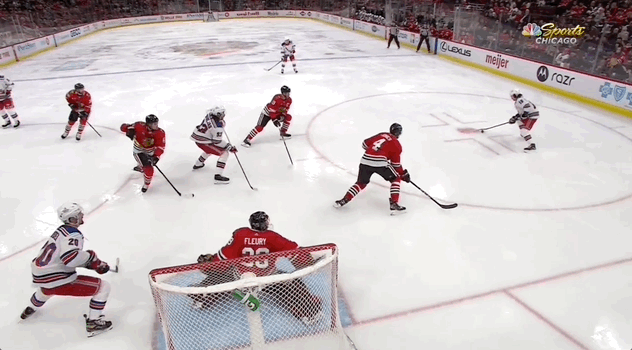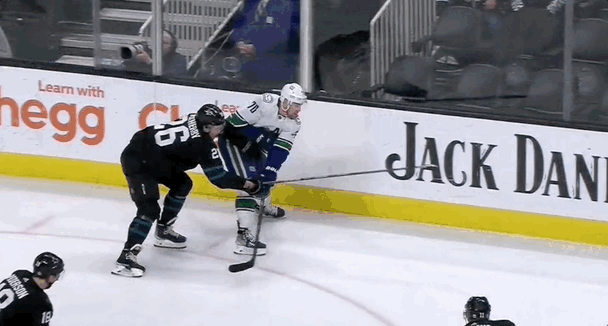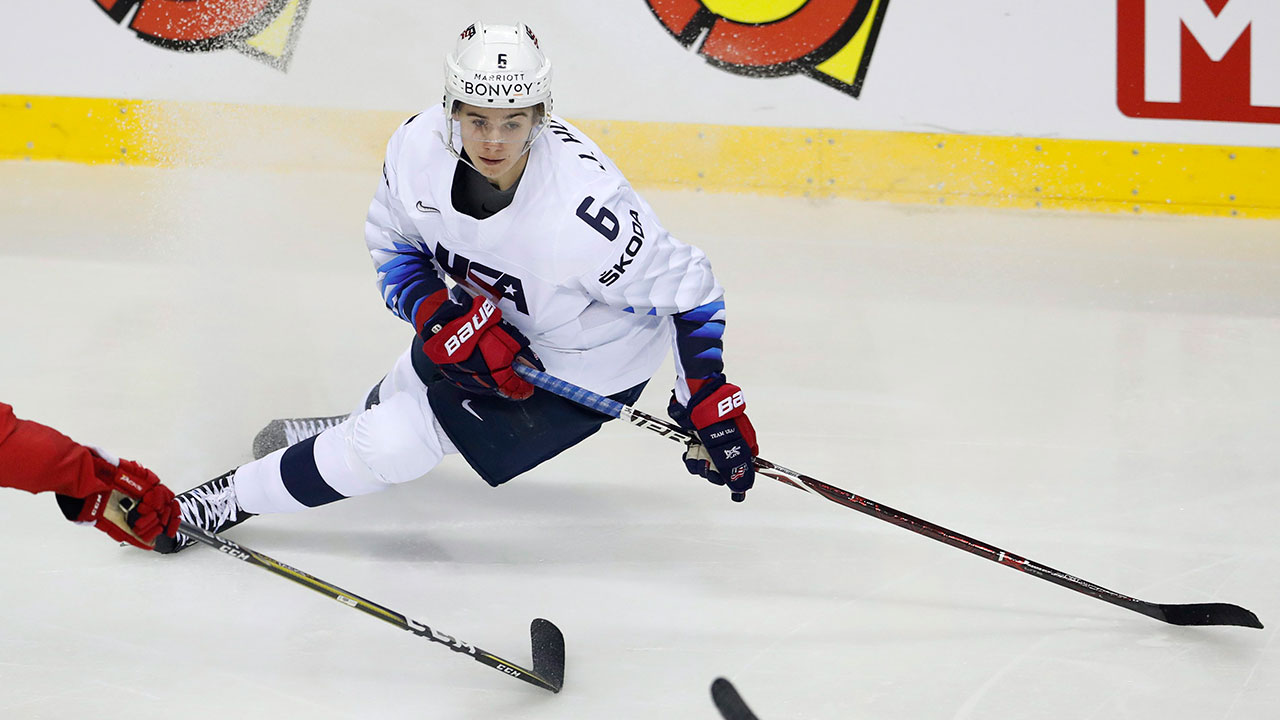It may seem like an odd time to talk about the Olympics. There’s so much uncertainty in the NHL right now that playing an international tournament just doesn’t seem feasible. But until there’s a definitive answer, the speculation of who will make each squad will continue.
If ultimately the NHL does not participate in the Olympics, at the very least, analyzing which players could unexpectedly make a team is a way to highlight players for their strong play. And if NHL’ers go, it’s unlikely that all who are asked will actually play, so this year, in particular, a long list of options are necessary.
There aren’t as many questions on defence. The USA blue line is likely going to feature Adam Fox, Charlie McAvoy, John Carlson, and Seth Jones along with Jaccob Slavin, Ryan McDonagh, Zach Werenski, and Quinn Hughes. Maybe Torey Krug pushes one of these backs out. Brett Pesce potentially could too, especially if any players opt-out.
It’s up front where players have been pushing for consideration to open the 2021-22 NHL season. So which American players have kicked their game up enough to put themselves in the conversation for Team USA?
Let’s take a look.
Chris Kreider: One of our leaders in the Cy Young race is also pushing for some serious Olympic consideration. The Rangers’ winger is the ideal combination of size, skill, strength, and speed that most general managers aim for. His successful season has been fueled by his goal-scoring with 18 tallies on the year already. Eleven of those goals have been scored from the net-front area on the power play, often with tips and deflections which are one of the most dangerous shots on the man-advantage. Those dangerous shots have contributed to a high all situation expected goal rate that ranks 14th in the league.

The knock on his game right now is that he isn’t passing the puck much. But if he’s paired with a set-up man and can focus on his shooting, he should thrive. What helps his case even more are his new-founded penalty killing duties; he’s not going to just go in a defensive shell while short-handed — he’s going to use his speed to bring the puck back up the ice and tick time off the clock.
Troy Terry: With 18 goals and 30 points in 31 games, Terry is making a name for himself in Anaheim and across the NHL. There are obvious concerns about sustainability, as he’s shooting at a sky-high 25 percent that’s close to double his career average. But is a player who will shoot from the quality areas. So far, he’s showing that he’s not one-dimensional either; he’s one of the more frequent passers in the offensive zone for the Ducks. And he’s one of the players helping drive into the offensive zone in the first place, ranking 35th in the league with his controlled entries at 5-on-5.
Trevor Zegras: Terry isn’t the only Young Duck in consideration. His teammate Zegras has put the hockey world on notice with his gutsy, skillful plays this season. The forward who can slot at either center or wing is one of the best puck-movers in the league. Zegras is 15th in the league with a high rate of controlled entries at 5-on-5 — most of which are carry-ins (his rate of 17 carry-ins per 60 rank 12th). Once in the offensive zone, he’s creative with his puck movement — whether he’s flipping the puck over the net, or moving it to the slot. At 5-on-5, his 12.6 pass attempts to the slot per 60 rank 25th in the league. But don’t count his shot out, either; he can fire pucks just as well as he can pass them.

Plus, it doesn’t hurt that Zegras has already shown that he can thrive at the national level the World Junior Championship.
Jack Hughes: Speaking of the future of Team USA, there’s Jack Hughes. Despite his experience in the program, there’s a reason why he could be overlooked this year: he’s only played 11 games. And he wasn’t exactly a prolific scorer last year, either. After a rough rookie year, Hughes improved below the surface — he just wasn’t finishing. This year, that’s changed.
So what could he bring to this team if selected? In Hughes, USA would gain an excellent player in transition. At 5-on-5, he leads all skaters in carry-outs from the defensive zone with 18.8 per 60. And he’s one of the best at bringing the puck into the offensive zone with possession, too; his rate of controlled entries for is second, while his 18.8 carry-in per 60 lands sixth. Along with his puck movement in transition, he’s a dual-threat in the offensive zone. Few players move the puck to the slot as often as the Devils’ center, plus he shoots there frequently, too.

Blake Coleman: If management isn’t looking for an infusion of youth, they may look to ‘known winners.’ Who better than a reigning back-to-back Stanley Cup champion? Coleman brings versatility; his two-way play can plug anywhere into the lineup. He’s one of the most frequent shooters in the league, and can help a short-handed unit become more of a power kill. On a team as deep as USA, he may not fit anywhere higher than the bottom-six — but skill is still needed there to take on squads as deep as Canada, Russia, Sweden, and Finland.
Conor Garland: Coleman isn’t the only versatile winger USA could look to. At 5-foot-10, Garland may not be tall in stature, but his presence on the ice is anything but small. He can transition the puck up the ice and help set his teammates up in the dangerous areas; he’s 33rd in the league with 11.9 pass attempts to the slot per 60. The winger’s ability to draw defenders to him when the puck is on his stick is a strength of his game, and helps create time and space for his teammates — just look at how Elias Pettersson’s finding his footing alongside him now.

Another perk to the spark plug is how he frustrates his opponents; he already has 16 draw penalties on the season that rank fourth in the league. It never hurts to have a player that can buy some power play time.
Brock Boeser: Garland’s not the only Canuck that should be drawing interest. Boeser’s slow start to 2021-22 may hurt his case. But even through the turmoil in Vancouver, the winger still finds himself high in league ranks with his shooting. Currently, he’s 29th in shot attempts for at 5-on-5 and 38th in slot shots for. That’s based on his entire season, and that includes some tough times. Since Bruce Boudreau has taken over behind the bench, the team’s trending in the right direction and some players, like Boeser, are being encouraged to play to their strengths — he’s shooting the puck more often and converting. It could be worthwhile for Team USA to capitalize on the momentum he’s building.

Jason Robertson: Robertson finished third in Calder voting for a reason last year; he was an essential offensive generator in Dallas last season. This year, the Stars’ offence still may not be where they could want or need it to be, but it’s not for a lack of trying on the sophomore winger’s end. He gets to the quality areas and shoots as often as he can, he can be counted on for a high rate of slot shots at 5-on-5. Plus, if Team USA wants to help their known commodities thrive, it doesn’t hurt to pair them with players they have success with in the NHL. So if Joe Pavelski makes it, it could be fitting to set Robertson alongside him.
Data via Sportlogiq

